
I have a few doctors in my family, but it was never something I had any interest in. Bodily fluids and seeing limbs out of their socket is just not my thing. The great thing about board games is being able to immerse yourself in a different work for a few hours and then walk away. In Clinic, players are able to run their own medical center without the bodily fluids…unless…nevermind.

The original version of Clinic and the first expansions, from designer Alban Viard, were built in his living room in 2014 and 2015. In 2019, Clinic: Deluxe Edition was funded through Kickstarter, along with an extension, with a new ruleset including a solo mode, artwork by Ian O’Toole, and tons of tiny cars, doctors, and nurses. In Clinic, you are competing with other clinics to become the most popular medical center in the area. Build treatment centers, hire staff, add floors, and serve patients to win the game.
Let’s be upfront; Clinic is a complex game with a lot of components to think about. At its core, players will build modules for specific types of treatment along with treatment and supply rooms to serve patients. Clinics can have multiple buildings and even multiple floors. As new staff are hired, and patients come to the clinic they will bring their cars and players will need places for those as well. Players will also have to balance treatment of patients to collect feeds and pay their staff, all while gaining popularity. Doctors and patients also come in different colors matching the level of skill or the level of treatment needed.
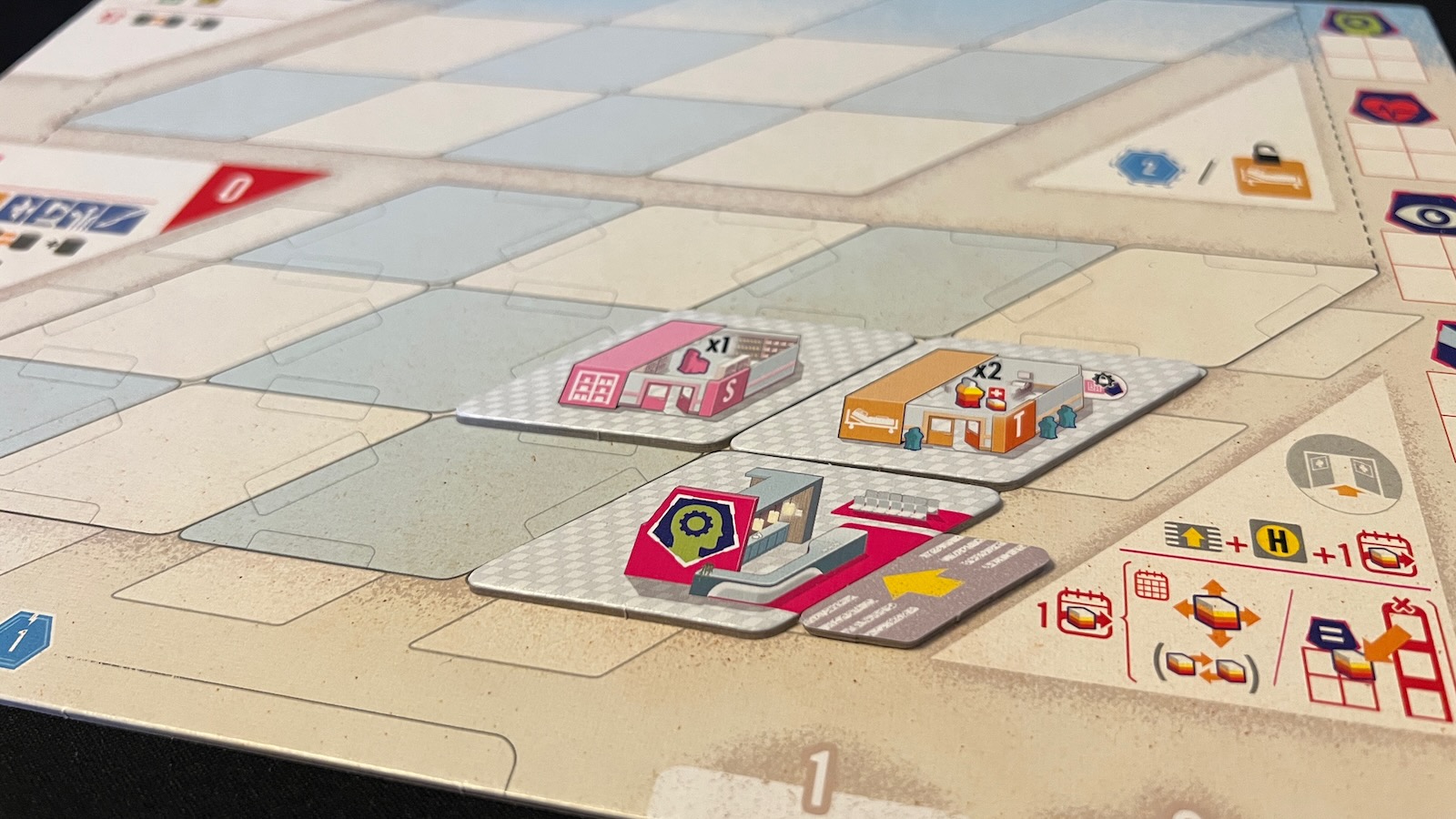
Set-up for the game is dependent upon the player count and includes a beginner and expert variant. The beginner set-up gives players a starting arrangement for their clinic tiles on a 4×3 grid. The expert variant allows players to choose the 3×3 or the 4×3 clinic board and set up their clinic in any way they choose. Each game takes place over six rounds, with three phases apiece.
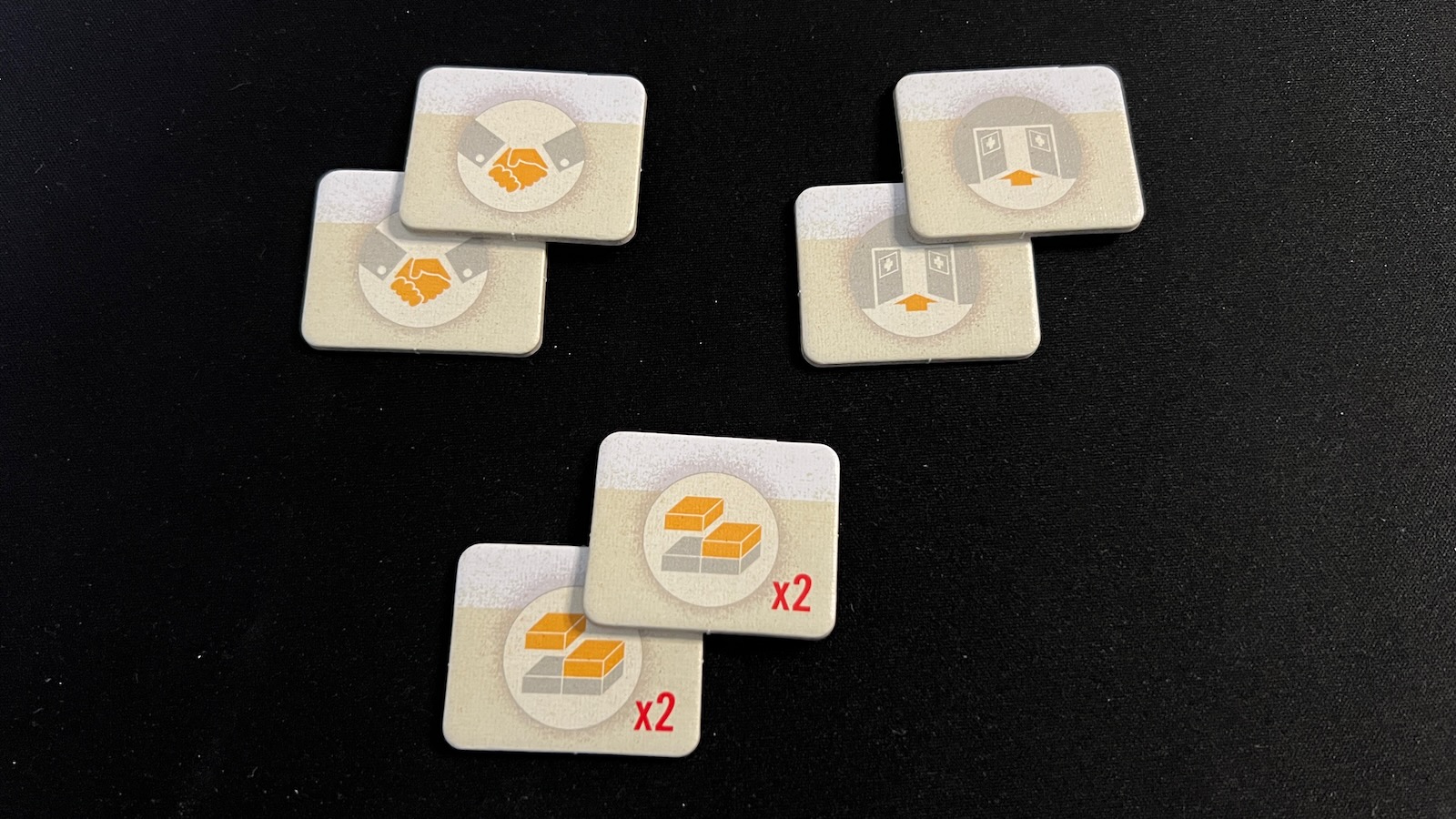
Phase 1 is the action phase with each player taking three turns. Players choose their actions each turn by revealing one of three different action tiles. Each player is given two of each tile so they can’t take the same action three turns in a row. Actions are executed in the following order: Build, Hire, and lastly, Admit Patients. One of the best design features of the main board is how the flow of the actions are illustrated across the board, signifying the flow of the game. Building is where players can add modules to their clinic board. These modules could be new treatment hubs, patient rooms, supply rooms, and even parking spaces, parks, and helipads. Each building tile available has construction rules that include adjacency requirements and floor limits. One of the trickier elements of the game is when adjacency runs in three dimensions and players can build multiple buildings in their clinic. The hire action allows players to hire doctors and/or a nurse or an orderly. Doctors can treat patients according to their color, denoting skill level, nurses help doctors treat patients outside of their skill level, and orderlies help with the upkeep of the clinic. The final action is admitting patients. Patients have different levels of care needed which is denoted by their color and must be matched with treatment hubs and similarly colored doctors. One thing to note is that every employee and patient in the clinic has a car, and those cars have to go somewhere…
The final part of phase 1 is movement. After all three actions are taken by each player, staff and patients officially enter the clinic and move to where they need to go. Each space a patient or a staff member needs to move through the clinic buildings costs a move along the time track. The time track denotes the urgency of the medical field and loses players points at the end of the game for every three spaces. One way to reduce time is by building special modules and constructing conveyors. Conveyors are basically teleportation devices allowing for free movement across, up, and even to different buildings in the clinic complex.
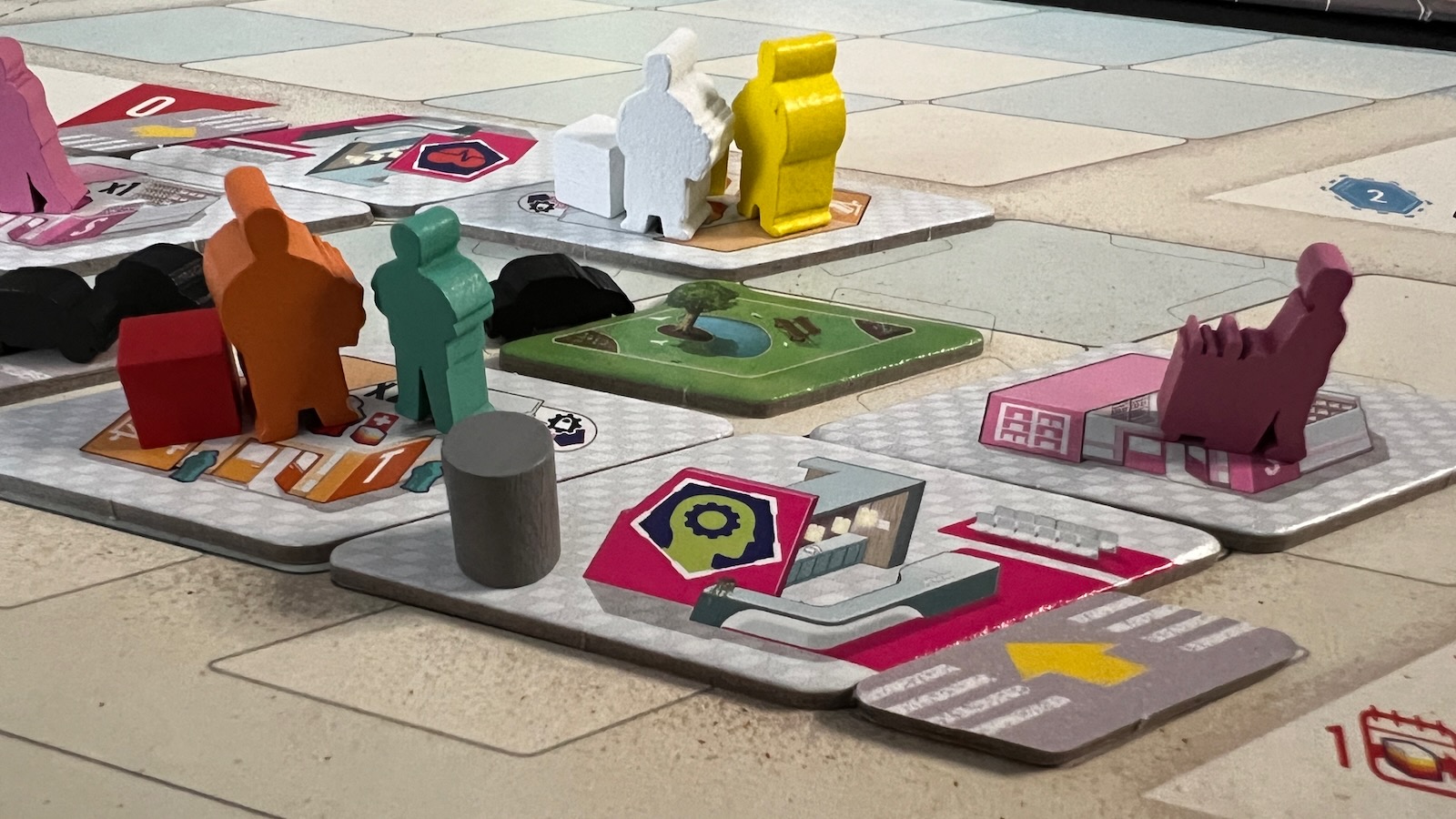
Phase 2 is the Business phase. In this phase, patients that are matched up with the same-colored doctor, or the appropriate nurse/doctor combination, are considered treated and must pay their bill. A patient’s color denotes how critical their condition was when treated. The more critical, the more skill needed to treat them, and the more money the player earns! Gardens and operating rooms can give extra money benefits. Patients will take their car and go home once treated. Then come the expenses, and it costs quite a bit of money to run this place. Each employee gets paid based on their color or position. Each module and support tile costs money to upkeep with orderlies reducing the upkeep cost. After paying for upkeep out of the current round’s profits, savings, or even your popularity, players can use funds to buy more popularity using any unspent income. Any left over income is added to the reserves.
The final phase is the administration/clean-up phase. On the main board, untreated patients leave the board, doctors still at the university upgrade their skill level and their color, and new doctors come to study. On the player boards, doctors who end their round in the lab will raise two levels of skill, while all other doctors regress one color level. Untreated patients will get worse by one color and red patients who go untreated…well they die, you lose five popularity points, and their car is abandoned in the parking lot forever.
After six rounds, players will gain points based on the colors of their remaining staff members, fully functional treatment rooms, and additional functional buildings. Players will lose points based on the colors of untreated patients and where their marker is on the time track. The most popular clinic will win!
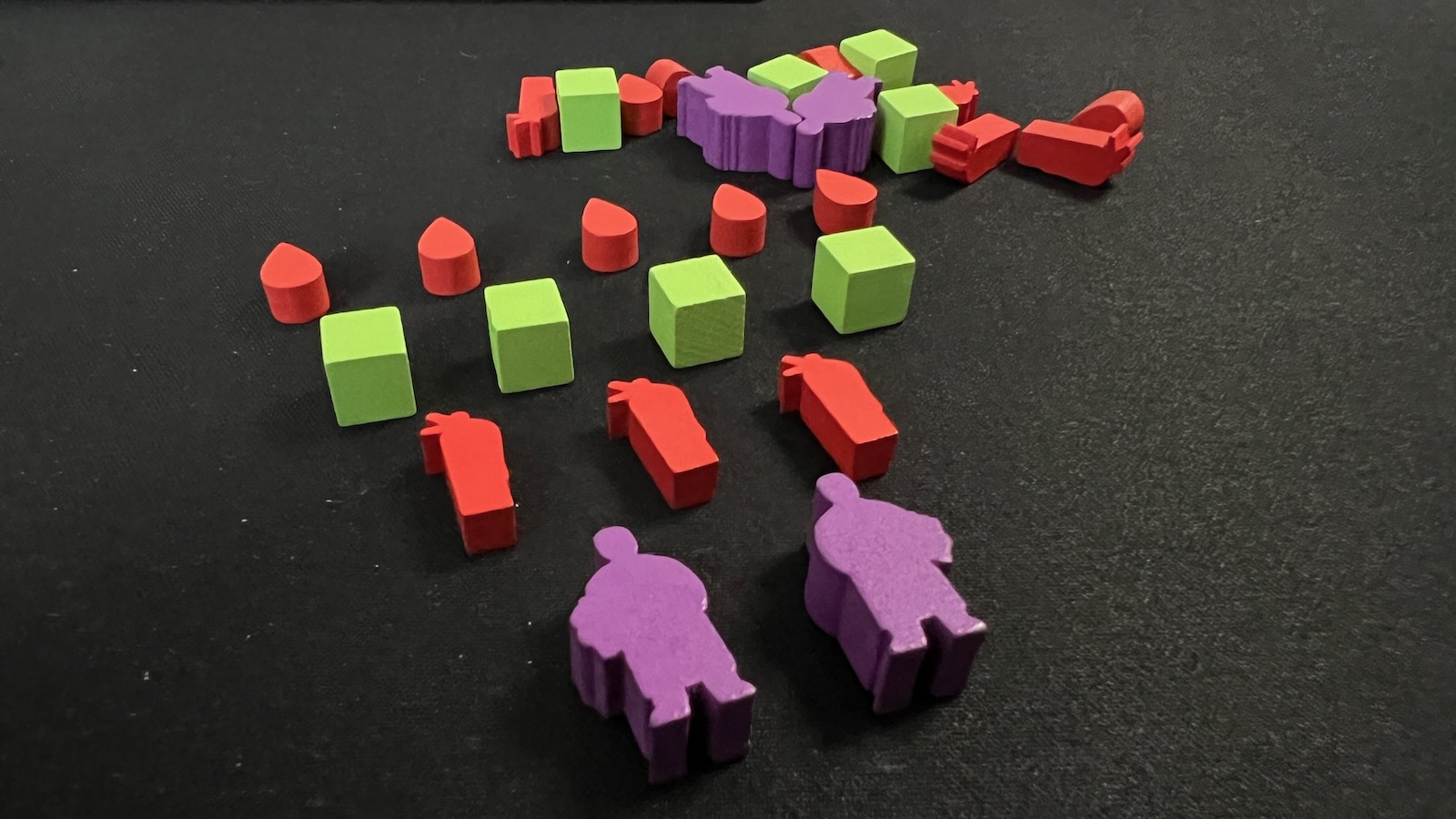
The base game also includes some alternate play modes. The first is the solo mode where players choose 10 goal conditions such as having 7 doctors hired or having no more white patients in the game. If the goal is met, then players will compare their popularity score to a chart for their final rating. While I don’t usually like a beat your best score solo mode experiences, the challenging goals make it more intriguing. Also included are four mini expansions. Blood Transfusions allow your staff to donate blood and nurses to treat patients. Extinguishers are a special safety measure that make patients more at ease giving bonuses when being treated, however, apparently people love to look at them so they have extra time when employees are passing during movements. Workaholic doctors raise the capacity of treatment rooms and can treat multiple patients, however, they cost more to hire. Zombies in the Clinic are a nuisance. People cannot move through spaces occupied by zombies, zombies can turn patients into more zombies, and if staff are taken out, they leave their cars! However, zombies can be cured by doctors.
As a side note, Clinic currently has five more extensions that have been released with similar modules to the ones listed above. There is also a campaign available, using different combinations of the base game and extension modules for the serious players.
Production

The production quality of Clinic: Deluxe Edition is top notch. The artwork is beautiful and inviting, which I have come to expect and love about Ian O’Toole. As stated before, the main board flows from left to right and includes everything needed to keep the game going once players are familiar with the iconography. The meeples are small, but fun. Each doctor, nurse, orderly, and even car meeple add to the overall aesthetic. The cardboard pieces are not overly thick, but they really don’t need to be. The way that the three-dimensional clinic board works is tricky but makes it fun when trying to figure out adjacency the first few games. It is easy to add a floor by adding a player board extender. The rulebook is incredibly easy to use and follow for such a complex game. The authors even make jokes throughout the rulebook, making it even more inviting. Examples are provided for all the different mechanisms which is something I deeply appreciate in a rulebook. The iconography throughout the game is easy to pick up and helps the game flow after a few plays reminding you of adjacency rules and what comes next in the round or turn.
Gameplay
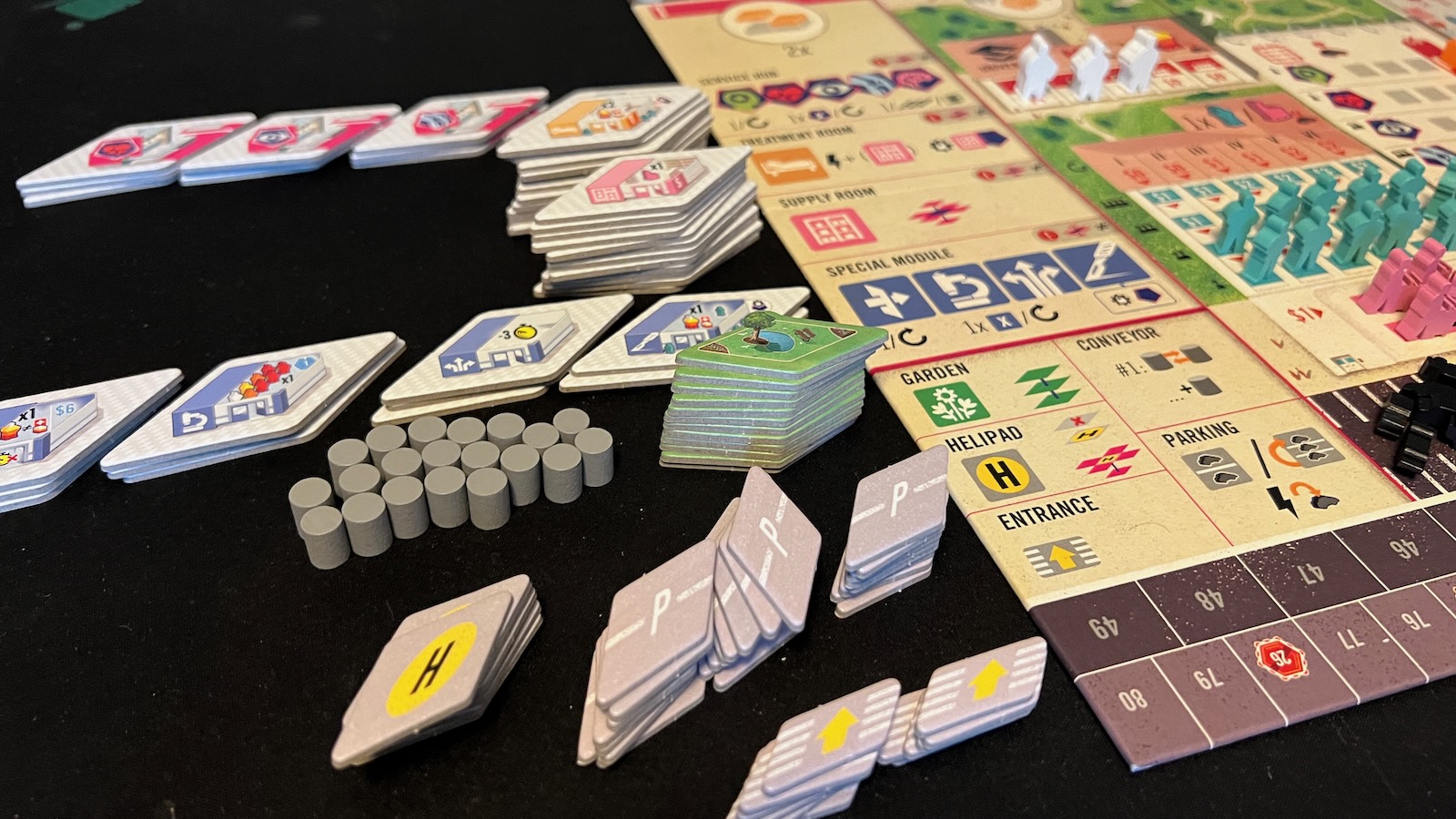
This game is a special kind of brain burn. Players have to balance construction of modules, staffing, recruiting patients, time considerations, and spatial positioning, all while trying to earn enough money to pay for upkeep, salaries, and buying victory points. It’s a lot to juggle and it is so much fun. This game is not for everyone, I would say and is on the heavier side of the euro game genre. It’s also a very niche game. The theming is not going to appeal to everyone and it’s a game you need to get to the table numerous times in order to develop strategies and understand the mechanisms fully. Teaching the game took some time and having to reteach with new players each time got cumbersome.
Overall, I enjoyed my time with Clinic. It’s a unique puzzle of a game where players must adapt to what patients walk in the clinic. How players balance their actions and their money directly correlates to what staff they can hire, what they can build, and how much popularity they can score. Clinic will be a game that I will love to play when it hits the table, but I can also see it occupying a space on my shelf due to lack of interest with other players.
Clinic: Deluxe Edition
Great
A heavier game based around building and operating a clinic. Players must balance the actions they take with what options the game gives them so they can build a thriving clinic and gain more popularity than the other players. A brain burning good time, but may not be everyone’s cup of tea.
Pros
- Some great mechanisms that requiring planning and balance
- The artwork and game specific meeple are welcoming
- Built in expansion and a replayable solo module
Cons
- Teaching to new players can take awhile
- Strategy takes numerous plays to develop
- A heavier game that may not get to the table as often as you’d like
